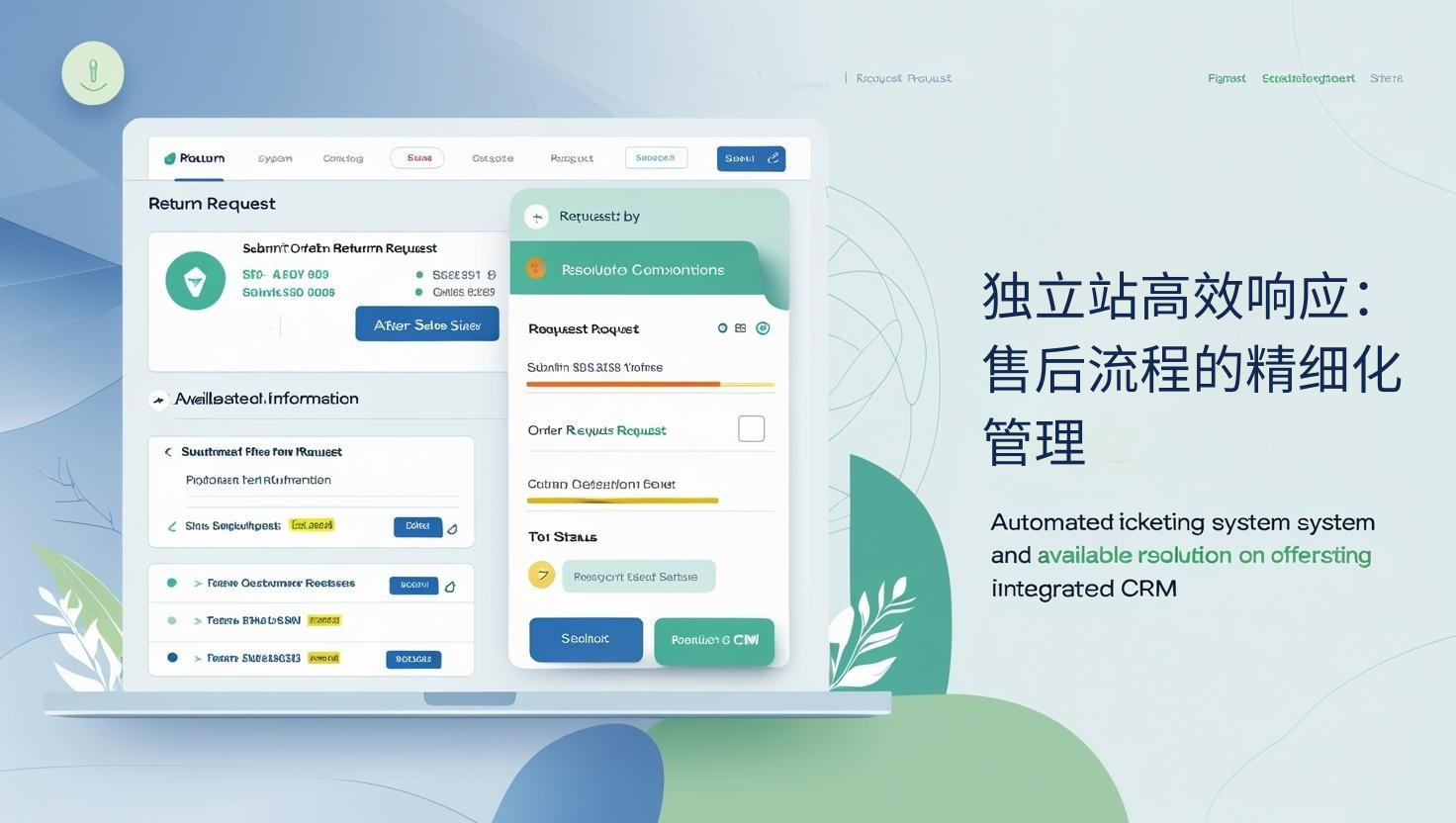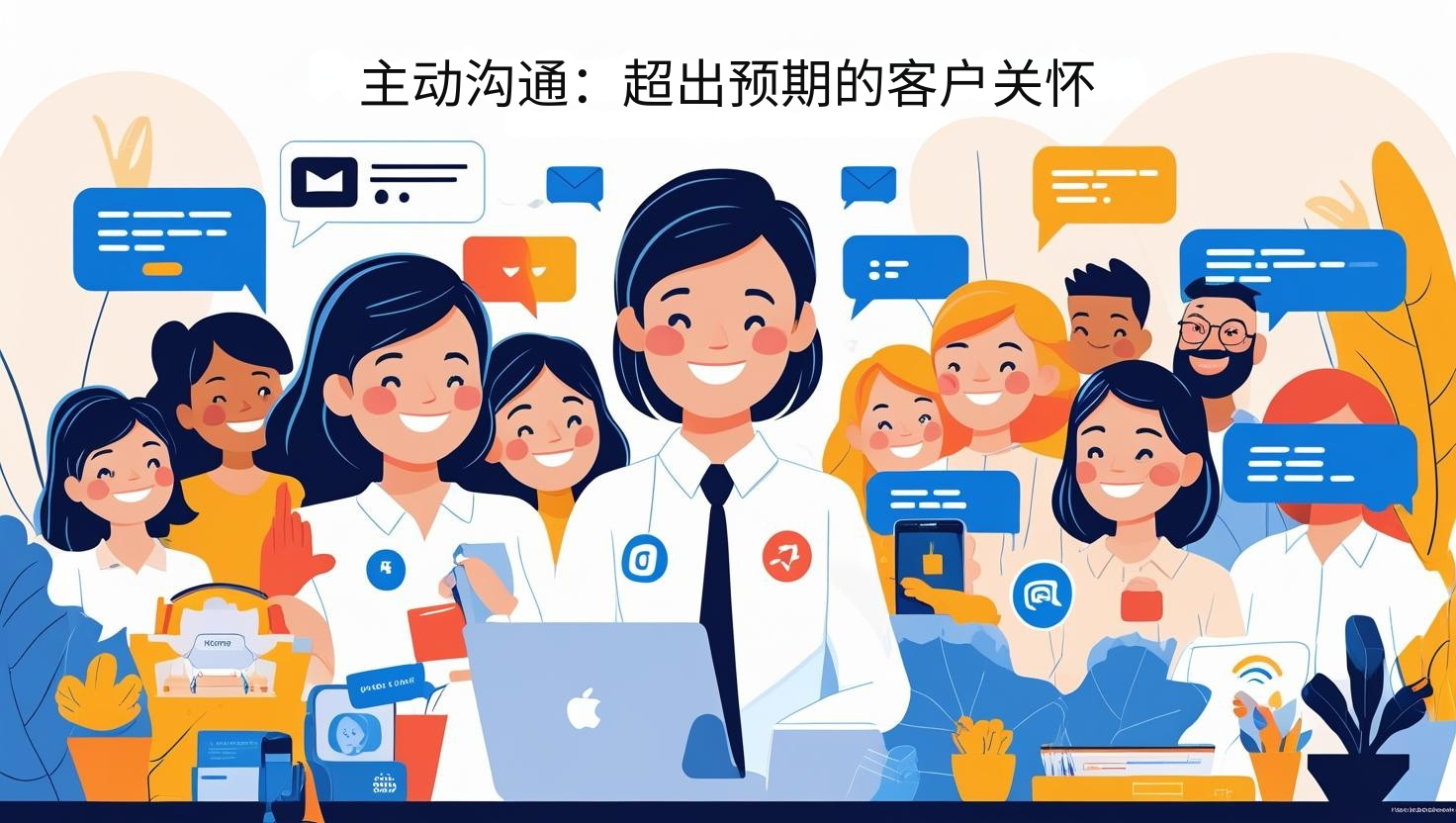In the cross-border e-commerce landscape, independent websites serve not only as sales channels but also as crucial platforms for building long-term relationships between businesses and customers. A positive after-sales experience directly impacts customer satisfaction, repurchase rates, and brand reputation. Optimizing after-sales service on independent websites to ensure customers experience beyond expectations is key to boosting competitiveness.
 Efficient response of independent stations: refined management of after-sales processes
Efficient response of independent stations: refined management of after-sales processes
Independent websites provide a unified customer service portal, enabling businesses to centrally manage after-sales requests. By establishing standardized processes and an automated work order system, businesses can ensure that customer issues are responded to in the shortest possible time. According to research by the International Customer Service Institute (ICMI) , rapid response is one of the key factors in improving customer satisfaction.
The backend of your independent website can integrate messaging tools and CRM systems to instantly synchronize order status, logistics information, and customer history. When customers submit returns, complaints, or inquiries, the system can automatically match order information with solutions, improving processing efficiency and reducing manual communication costs.
Personalized service: data-driven customer experience
Optimizing the after-sales experience isn't just about solving problems; it's about providing personalized service. Independent websites analyze customer purchasing behavior, preferences, and historical feedback to offer customized solutions for each customer. By integrating data analysis tools from the International e-Commerce Group (IMRG) , companies can adjust their after-sales strategies based on customer value, purchase frequency, and product preferences, achieving differentiated service.
For example, high-value customers can enjoy expedited returns and exchanges or dedicated customer service, while regular customers can receive clear operational guidance via automated messaging. Through data-driven strategies, companies can enhance the customer experience while handling after-sales issues, ensuring customers feel attentive and professional.
 Proactive Communication: Customer Care Beyond Expectations
Proactive Communication: Customer Care Beyond Expectations
A high-quality after-sales experience emphasizes proactive communication. Independent websites can notify customers of shipping status, maintenance recommendations, or promotional information via email, text message, or social media after an order is completed. Furthermore, companies can utilize guidance from the Customer Relationship Management Association (CRMIA) to establish a customer return visit mechanism to collect feedback and implement improvements.
Proactive communication not only resolves potential issues but also allows customers to feel the brand's care and professionalism. For example, if the system detects that a customer's electronic product is about to expire, the independent website can automatically push extended warranty services or maintenance recommendations, ensuring the customer experience exceeds expectations, increasing repeat purchases and brand loyalty.
Technology empowerment: automation and multi-channel integration
Optimizing the after-sales experience on an independent website requires technology. Companies can leverage automated tools to modularize and standardize processes like returns, refunds, and customer service inquiries for efficient processing. Multi-channel integration is also crucial. By integrating email, social media, instant messaging, and after-sales systems through an independent website, customers can ensure a consistent and efficient service experience across all channels.
In addition, data visualization tools can help managers monitor after-sales indicators in real time, such as problem resolution time, customer satisfaction, and repurchase rate, providing a scientific basis for subsequent optimization and achieving continuous improvement.
Recommended related articles: Multilingual Independent Station Strategy: Balancing Localization and Internationalization







